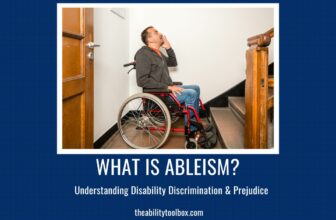
If our dreams are supposed to be representative of what our unconscious minds are processing, mine are very revealing. I often have a recurring dream that there is a tsunami and I’m being pulled under the water — drowning or otherwise struggling to breathe. These dreams tend to occur when I’m having a flare-up of my PTSD symptoms. Whether it’s due to a known trigger that catches me off guard or something I can’t put my finger on — my mental health takes a nosedive and it is very frustrating.
I’ve been in therapy for almost seven years. I have spent countless hours doing the work of “healing” from my trauma. Talk therapy, EMDR, yoga, journaling, medication, and more have been weapons in my arsenal to combat the traumas that have taken hold of my mind and body. While I often feel like I’m doing infinitely better, there are days — weeks even — where my symptoms take hold, pulling me under like that tsunami in my dream.
In spite of all the self-soothing, coping strategies, self-care, and rituals that I have cultivated to pull me out of the muck like a life jacket, it seems in those moments like my mind is intent on towing me under like an anchor to the bottom of the darkness. I begin to think that I’ve somehow forgotten how to human. I wonder if all of my hard work has been for naught. And then — bit by bit — I find my swimming legs. I slowly and cautiously raise my arm toward the surface, knowing that if I kick hard enough, I’ll float to the top.
When I resurface from a flare like this, I think maybe this is the last time. Maybe now I’m really “healed.” And I plug away living life as best as I can — riding the waves like a surfboard — knowing full well that someday there will be another unforeseen tremor that disrupts the calm waters, threatening to suck me out to sea. It’s cyclical — and while surprising — not completely unexpected.
Healing from trauma isn’t some kind of endpoint. It isn’t a final destination. It’s not like you can take an antibiotic and that will get rid of it. It’s not like you can put a cast on it and six weeks later the bone is mended. It’s more like a chronic illness that has its good days and bad days.
When things are going well, we might be able to live life fully. When our symptoms get activated, we may not be able to function at all. Yet, the longer we live with the illness — we begin to see patterns evolve and we start to be able to incorporate things into our lifestyles that can create longer stretches of good days. And we are better able to return to homeostasis because we have figured out what helps equilibrate us.
I know I can’t change the past. What happened happened. That’s built into every fiber of my being. Even if I’ve processed those memories, they live inside me like scabs that can and will get picked at. Those scabs harden and become weathered — making it more difficult to rip them open — but they are still spots where we are vulnerable. When our window of tolerance is low due to stress or some kind of new trauma occurs, that scab can reopen. But it heals again and again, because that’s the miracle of the human mind.
In spite of everything we experience, humans are resilient. That resilience is what gives me hope, even if I recognize that “heal” is a verb, not a noun. It requires patience and vigilance. It necessitates courage and wisdom. And mostly, it commands our attention to notice it when we are out of alignment.
Healing from trauma is an act of self-love and self-respect. Just as the ocean can be both tranquil and turbulent, so can our traumatized minds. We just have to learn how to navigate the ebbs and flows of those waters and keep swimming.
Image by Dimitris Vetsikas from Pixabay
Chef, writer, advocate, furr mom and worlds biggest Céline Dion fan.







